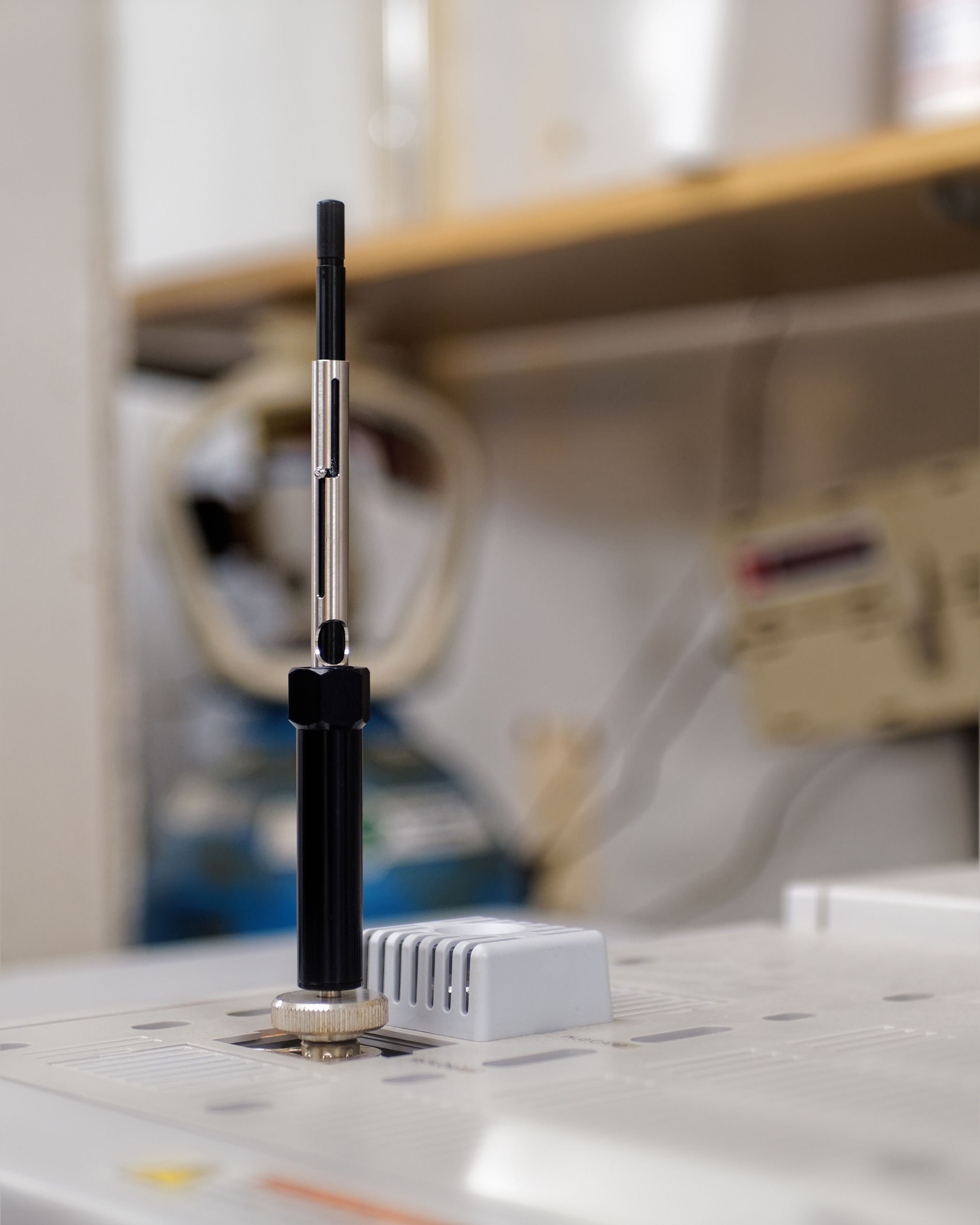Green Analytical Chemistry Methods for Microextraction
A group of scientists led by Noorfatimah Yahaya of the Universiti Sains Malaysia in Penang, Malaysia recently evaluated different microextraction methods using green analytical chemistry (GAC) metrics. Their findings were published in TrAC Trends in Analytical Chemistry (1).
Solid phase microextraction holder used in gas chromatography. | Image Credit: © ggw - stock.adobe.com

Green chemistry has become a popular topic recently in the analytical science community. For example, at Pittcon 2024 in San Diego, California, New Jersey Institute of Technology (NJIT) professor Omowunmi Sadik began her opening ceremony lecture by discussing how to “make chemistry more sustainable for purposes of human and environmental health” (2). This was a sentiment that carried throughout the conference, with another talk, led by Ettigounder (Samy) Ponnusamy and titled “Sustainability and Regulations in the Environmental Lab”, emphasizing the 12 principles of green chemistry through the lens of the DOZN web-based greener alternative scoring matrix, which was last updated in late 2022. In an interview with LCGC International, Sadik, she emphasized the importance of green chemistry, stating, “It is time for academics to think about how to apply the concept of green chemistry” (3).
Green analytical chemistry (GAC) has revolutionized sample preparation methodologies by integrating sustainability, efficiency, and safety into procedures while meeting analytical and economic requirements. Properly integrating GAC into sample preparation techniques has led to the reduction or elimination of hazardous substances, such as toxic solvents, minimizing risks to human health and contributing to environmental protection. Additionally, adding GAC contributes to overall sustainability of analytical workflows regarding the development of online sample preparation, high-throughput analysis, and automated sample preparation. This process also significantly reduces analysis times and labor requirements. Using GAC can lead to the development of innovative approaches in analytical chemistry, such as microfluidics, miniaturization, and greener energy sources.
In this study, the researchers discussed various greenness metrics, including the National Environmental Methods Index (NEMI), Analytical Eco-Scale (AES), green analytical procedure index (GAPI), and analytical greenness metric (AGREE), as well as their modified versions. The research specifically focused on how these metrics are applied to microextractions. Analysis procedures involved comparing each approach’s score and highlighting potential factors that can influence greenness. Using these findings, the scientists found that microextraction techniques are the preferred choices in the future for replacing large-scale extraction, while also being useful as standard methods for routine laboratories.
To be sure, it can be challenging to implement green and sustainable techniques, since they need to balance greenness and analytical merits (sensitivity, selectivity, accuracy, and more). Additionally, qualitative or quantitative measurement of greenness requires defined criteria for such assessments. This has led to various metrics being developed to address this challenge.
References
(1) Yahaya, N.; Mohamed, A. H.; Miskam, M.; Keyon, A. S. A.; et al. Green Analytical Chemistry Metrics for Evaluation of Microextraction Methods: Fascinating or Essential Tools in Real-World Applications? TrAC Trends Analyt. Chem. 2024, 172, 117587. DOI: 10.1016/j.trac.2024.117587
(2) Lavery, P. Sustaining Pittcon Conversations About Green Chemistry. MJH Life Sciences 2024. https://www.chromatographyonline.com/view/sustaining-pittcon-conversations-about-green-chemistry (accessed 2024-3-4)
(3) Lavery, P. The Importance of Sustainability in Analytical Chemistry: A Pittcon Interview with Omowunmi Sadik. MJH Life Sciences 2024. https://www.chromatographyonline.com/view/the-importance-of-sustainability-in-analytical-chemistry-a-pittcon-interview-with-omowunmi-sadik (accessed 2024-3-4)
Carol Robinson Awarded 2024 Lifetime Achievement European Inventor Award
July 24th 2024Carol Robinson of the University of Oxford has received the European Inventor Award 2024 for Lifetime Achievement from the European Patent Office for her work bringing mass spectrometry to structural biology.
Contaminants of Emerging Concern in Drinking Water: An HTC-18 Interview with Leon Barron
July 23rd 2024At HTC-18 in Leuven, Executive Editor of LCGC International, Alasdair Matheson, spoke to Leon Barron from Imperial College London about his innovative research focusing on modern chromatographic techniques for analyzing contaminants of emerging concern in drinking water.